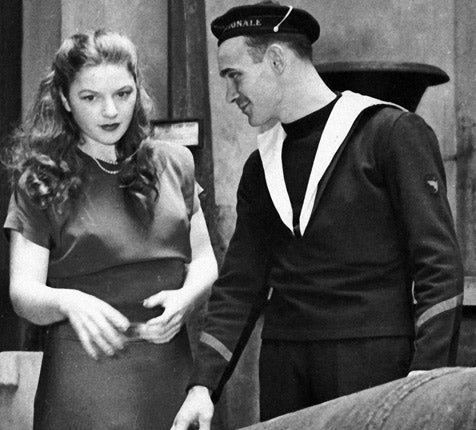Susan Reed: Singer who inadvertently helped spark Britain’s folk revival

Susan Reed was a part of the US folk scene in the 1940s exemplified by the likes of Richard Dyer-Bennet, John Jacob Niles and Carl Sandburg; her speciality was folk songs, especially Irish ones, on which she accompanied herself with zither, harp and sometimes autoharp. Although her career would be cut short and is generally viewed as period folk Americana, she had an unsung role in Britain's folk revival.
Susan Reed and her elder brother Jared, also a folk singer, came from a theatrical background; the family home was liberal-to-communist and a haunt for folk talent including Sandburg and Leadbelly. Reed was schooled in South Carolina, California and New York, and had her interest in Irish folk music bolstered by visits from members of the Abbey Theatre Company from Dublin, particularly Ralph Cullinan and Farrell Pelley. Although Reed gave her big public debut at NYC's Town Hall in 1946, aged 19, she had been singing for wounded servicemen and appearing on the bill at Cafe Society Uptown before then.
Reed's star rose. In a New York Times piece of 1947, the great folklorist Alan Lomax placed her in the same company as Burl Ives, Josh White and Woody Guthrie. She played the hot nightspots in New York City and recorded for RCA Victor, Columbia Masterworks and the nascent Elektra Records. She also appeared in the role of the folk singer Jennie Higgins in the B-film Glamour Girl – featuring "Gene Krupa and His Orchestra" and "Susan Reed and Her Zither".
Such was her impact that she became part of the new post-war folk scene epitomised by Burl Ives and Pick Temple, that of the commercial cross-over folk act. A 1950 Theatre Arts piece praised her voice as "the female counterpart of the Burl Ives tenor" and her "carefully planned naiveté".
By the late 1950s her career had nosedived, however, arguably through a combination of the business, red-scare blacklisting and her mannered style of singing, which was deemed outmoded by the early 1960s.
Glamour Girl was re-titled Night Club Girl for British audiences, and in 1948 a Hastings schoolgirl called Shirley Collins saw it. Left-wing politics and a background in folk music in the family shaped her and her sister Dolly's musical careers. But seeing Susan Reed in a Sussex picture palace put one of England's greatest folk singers on the path to becoming a professional, although for decades she was unsure who that singer was. Only in 2007 did the former Oyster Band musician Ian Kearey track down a battered LP. "Cheesy cover, pretty girl with lots of lipstick and folksy dress, playing harp," she wrote to me, and the mystery of the red-headed singer was solved.
Ken Hunt
Susan Catherine Reed, folk musician: born Columbia, South Carolina 11 January 1926; married James Karen (one son); died Long Island, New York 25 April 2010.
Join our commenting forum
Join thought-provoking conversations, follow other Independent readers and see their replies
Comments
Bookmark popover
Removed from bookmarks